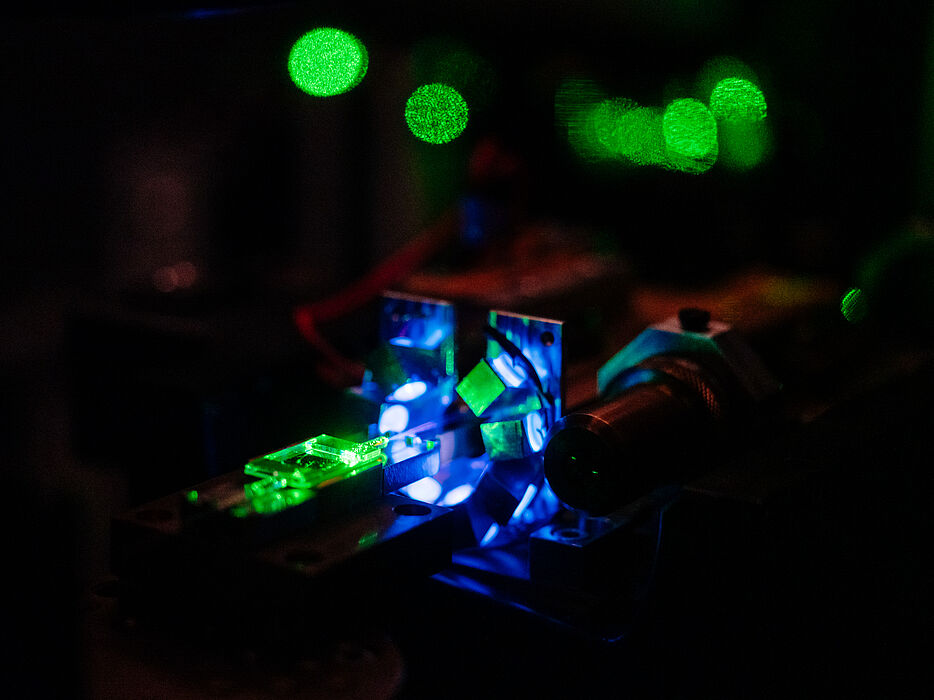Scientists achieve precision control of collective light emission from multiple nano-systems for the very first time – article in “Communications Physics”
Scientists at Paderborn University, TU Dortmund University and the University of Würzburg have for the very first time succeeded in using laser pulses to precisely control ‘photon echoes’, which can occur when light waves superimpose on each other. The findings of the research have now been published in scientific journal “Communications Physics”, published by the Nature Publishing Group.
‘Wie man in den Wald hineinruft, so schallt es heraus’ (‘shout into the forest and a similar echo will return’, or ‘What goes around, comes around’), is not only a well-known German proverb, but is also literally true. When a sound wave is reflected, the echo is heard. When exactly it comes back, however, depends on the ‘forest’ – but first and foremost on the distance between the caller and the place of reflection,” explains Professor Torsten Meier from Paderborn University. “Just imagine that you could tailor when you wanted the echo to come back to you,” continues the physicist. A team of scientists has now achieved just this. Not for acoustic signals, however, but for optical signals: The scientists succeeded in controlling photon echoes emitted by semiconductor quantum dots with sub-second precision.
Meier explains: “Optical echoes are somewhat different to conventional acoustic echoes, because they are not generated by the reflection of waves, but rather in a non-linear optical process. Two short laser pulses are sent to a sample: The first represents the signal and the second the forest. This provides for the reflection. When the lag time of these pulses is doubled, a new light pulse, the photon echo, is emitted by the system exposed to the light.” Using a further control pulse, the researchers were able to control this photon echo within the picoseconds range (i.e. 10-12 of a second), and thereby delay it to a desired point in time. Such control is particularly pertinent for nanophotonic circuits in which multiple optical systems need to be precisely synchronised with each other.
The theoretical prediction of the effect was developed in Professor Torsten Meier’s research group. A big challenge was the experimental implementation, which was carried out in the research group led by Professor Ilya Akimov (TU Dortmund University): “The temporal control of optical echoes is a highly dynamic effect, whereby the control pulse virtually pauses the system,” says Hendrik Rose, a PhD student in Paderborn. Alexander Kosarev, a PhD student at TU Dortmund University, adds: “This effect was recently theoretically predicted, was successfully experimentally implemented by us and offers a wealth of possibilities for manipulating light emissions from semiconductor systems.” The samples used were produced in Professor Sven Höfling’s (University of Würzburg) research group.
The research findings are the result of a collaboration funded by the German Research Foundation (DFG) as part of the Transregio 142 “Tailored Nonlinear Photonics” project. Based on this first demo, the scientists now want to optimise the effect, by increasing the time lags, for example. The phenomenon is set to be further developed in the future, in particular for novel applications in the field of photonic quantum technologies, which are the subject of intensive research at the Institute for Photonic Quantum Systems (PhoQS) at Paderborn University.
Please find the complete article here.


